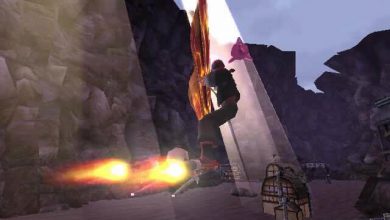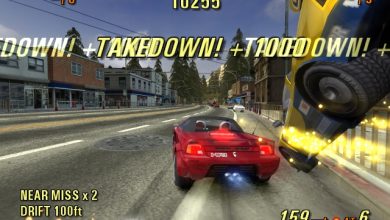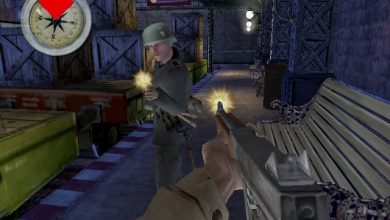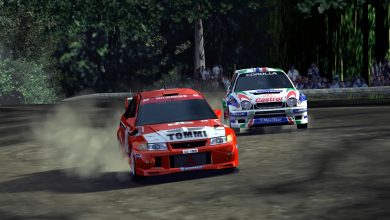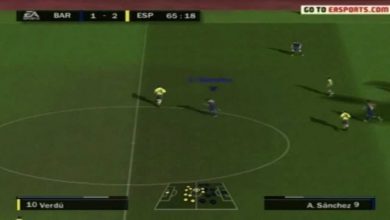Unison Review
The evil Emperor Ducker has outlawed dancing in the city known as Twin Ships, but the mysterious Doctor Dance has an idea. By forming together a rebel dance troupe known as Unison and hijacking the airwaves, the Doc hopes to create a popular uprising against Ducker’s regime and eventually convince him to change his evil ways. You play one of the three members of Unison as you dance your way through twelve funky tracks ranging from KC And the Sunshine Band’s “That’s the Way I Like It” to Apollo 440’s “Stop the Rock”. Each member of the dance team features her own unique moves, providing the story mode with added replay value. Pulling off moves requires only the use of the Dual Shock 2 controller’s analog sticks – no other peripherals are required (or supported). Dance moves are then rated based on a scale ranging from “Perfect” to “Miss”, with the average compiled at the end of each song into a final grade and, in the case of the story mode, into an audience rating at the end of each hijacked broadcast. Complete the story mode and check out Club Tecmo, where new songs will be available to you on a brand new stage, allowing you to compete for high scores with either the CPU or up to two other human players.
Whatever else we say in this review, you’ve gotta give Tecmo a bit of credit here – Unison is the kind of game that, three or four years ago, would have made the trip across the Pacific from Japan to the US in about the same length of time as it’d take a pig to fly that distance (in other words, never). It’s easily one of the goofiest games you’ll ever see in your life and was a niche title even among the popular “rhythm action” genre in its home country – props to Tecmo for having the guts to bring it to the much more conservative American market. This country needs more publishers willing to take chances like this. All that said, two obvious questions remain: first whether or not it’s actually a decent localization, and more importantly whether the game is good enough to have deserved localizing at all. We’re pleased to say the answer to both of those questions is yes, though with some major caveats.
It’s All About the Ratings
The basic game engine revolves strictly around using the PS2 controller’s analog sticks rather than any separate dance pads, maracas, motion sensors, or other devices. This should broaden the game’s appeal a bit among those who don’t feel like shelling out the hundreds of bucks most dancing games cost to play properly – and for the most part, the system works pretty well, though you obviously never feel quite as connected to your characters as in some other rhythm and music games. For the most part, controlling the moves is pretty easy, and unlike a lot of strictly “Simon Says” style dancing games you do have some limited but direct control over your dancer’s actions – pushing up on the left stick will, for example, raise your dancer’s corresponding arm in the air. If you’re late on your dance moves or miss them completely you’ll get out of sync with your co-dancers, and this will cause your approval rating among the audience to drop and will eventually result in failure at the end of whatever song you’re dancing to – hence the title “Unison”, as the point is keeping in step with your partners. Look at it like a cross between high-end dedicated-peripheral music games like Dance Dance Revolution, Para Para Paradise or Samba De Amigo and lower-end, more mass-market games such as Bust a Groove and Parappa the Rappa that use only the standard controller but provide no real direct input for your dancers (or musicians).
The Japanese version of the game was insanely difficult and required complete memorization of each dance routine ahead of time while offering no real visual aids to the control inputs required other than the positions of the dancers themselves (your own dancer will sort of hint at what you’re supposed to do by beginning a move before you execute it – she’ll only falter if you don’t finish it up). The control inputs themselves also required tons of diagonal and rotating movements – thankfully, that’s been toned down quite a bit to mainly just up/down and left/right movements (Chilly – the hardest dancer of the three – still has some required stick rotations in her move list). In addition, a visual representation of the directions you’re supposed to move the sticks is now always on-screen, though you can switch it off if you feel confident. Some may accuse Tecmo of having “dumbed down” the game for the American audience, and it is true that the game is a heck of a lot easier – but it’s really more a case of the company simply having made a too-difficult game playable. Dancing games are supposed to be about getting into the rhythm of the music and impressing yourself and your friends with the moves you’re able to pull off; they’re not about sitting in a chair cursing in frustration as you practice the same song over and over.
No, We’re Not Down With O.P.P.
There have been other, equally substantial changes in the American release, most notably the music and voice characterizations. The dubbing job is actually pretty good, with a campy feel that fits the style of the overall game well (astute fans of the Iron Chef TV show will also recognize the dubbed voice of Ohta as Doctor Dance). Sure, some of the girls are annoyingly high-pitched and none of it’s oscar-worthy material, but that’s why they call it camp after all – and that’s the way the import release was too. The music, on the other hand, is a whole other can of worms – wholesale changes were made to the game’s soundtrack, only occasionally for the better but on the whole for the worse. Tecmo apparently knows this is a niche title and is marketing it specifically towards Japanese game and anime fans (it even screams “ANIME” on the back of the game box) – yet these are exactly the kinds of changes that will turn off that demographic. Replacing Morning Musume’s catchy and infinitely danceable “Love Machine” with Naughty By Nature’s old (though hardly classic), offensive, and basically rhythmless “O.P.P.” is probably the absolute worst music substitution ever in the history of video games. Luckily it’s banished from the story mode, only being available in the arcade mode known as Club Tecmo. The same could be said for about half of the eight new American songs, though there are some good ones here – namely Apollo 440’s “Stop the Rock”, Sister Sledge’s remixed “We Are Family”, Aqua’s (somewhat stale) “Barbie Girl”, and K.C. and the Sunshine Band’s “That’s the Way I Like It”. The choreography in these songs is also pretty swell, with full-body disco action that has a bit of a more classic feel to it than the current Japanese Para Para dancing fad used in some of the import’s songs. The really annoying thing, though, is that this game is a DVD release – with only 12 songs and a short story, it would have been easy for Tecmo to include both the American and Japanese versions of the soundtrack on the disc. Unfortunately, they simply chose not to.
Of course, we can’t go the entire review without once mentioning the game’s graphics. Unison has a style completely its own – not even any other dancing game touches it (this is a genre known for outlandish, stylized graphics to begin with). Even Sega’s Space Channel 5 – the previous high watermark in the style department – doesn’t quite get there. The character designs in Unison are anime-influenced but blown even further out of proportion, the dance outfits lifted straight out of real-life discos (both modern and classic), the environments created in a flat, cartoon-like fashion. This is an incredibly bright and colorful game, with dramatic lighting and camera angles, amazingly fluid motion capture animation, and a distinct style that we can’t imagine being outdone in sheer gaudiness any time soon. That said, there will probably be those of you out there who would question the sexual orientation of any man that played this game – it is definitely not the most masculine of titles, but it is sure fun to look at regardless of gender.
When it comes down to it, Unison is still a niche game in a genre that’s itself relatively small in the US – and unfortunately, the niche it occupies is not well-served by many of the musical substitutions. Still, it is a fun game that anyone can play without shelling out for added accessories or peripherals, and it simply oozes style. If there’s even a wee bit of non-conformist or club kid in you, two-step it up to your local retailer and give Unison an audition.

